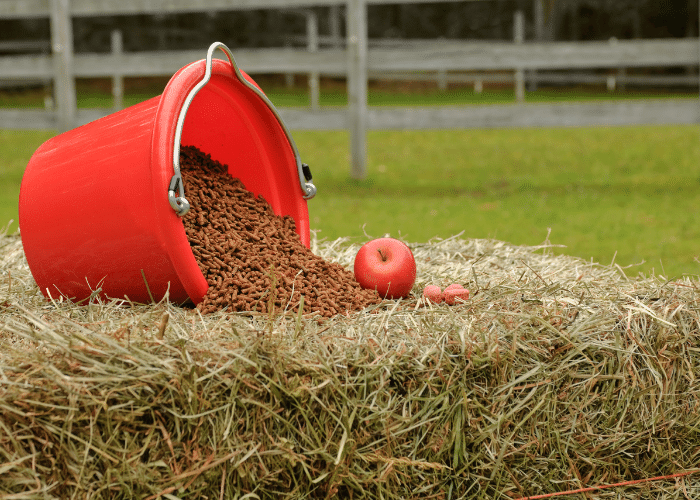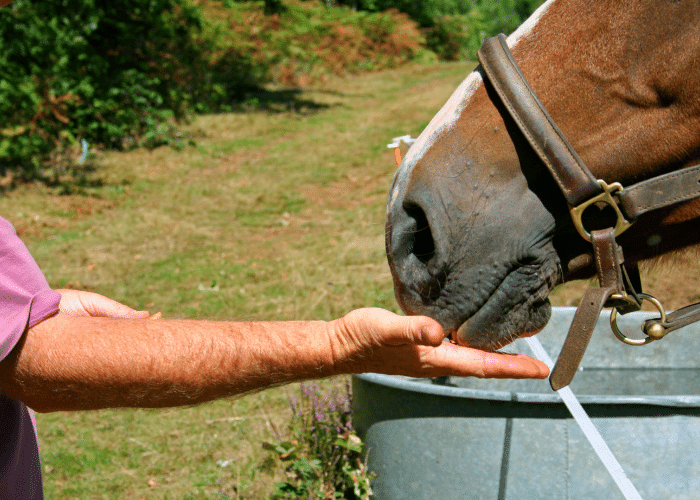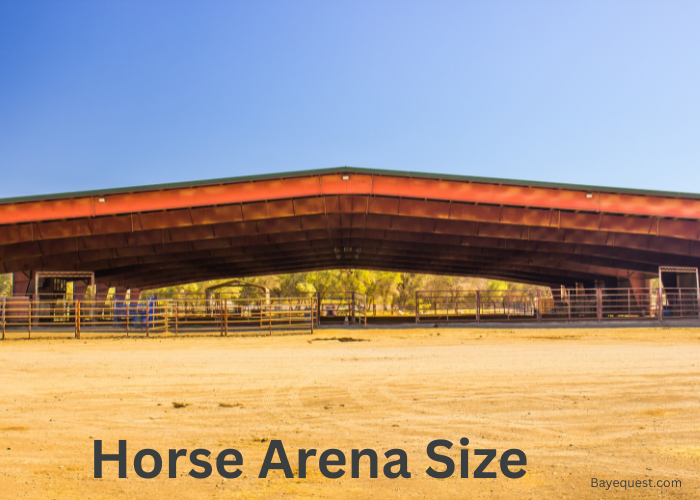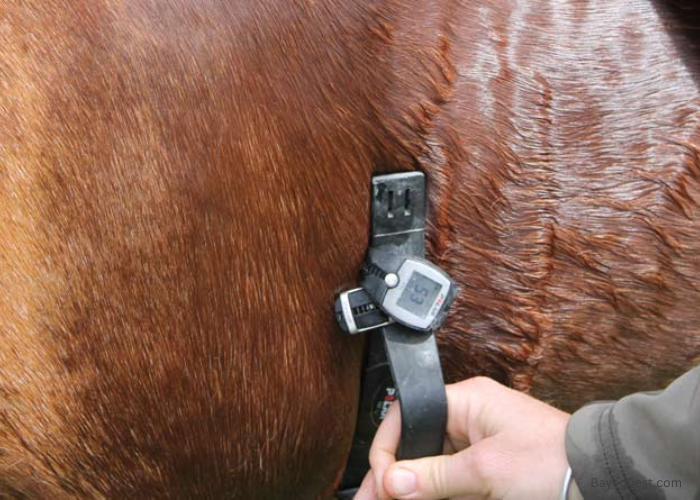Grain free feed for horses turns heads and changes minds in equine nutrition. It’s not just a trend. It’s a return to what’s natural and, perhaps, what’s best for our equine friends.
This blog takes you through the lush, untamed meadows of grain-free diets, where health and vitality bloom. Here, we’ll uncover the secrets of a lifestyle choice as old as the hills yet fresh as the morning dew.
From the health benefits that can transform your horse’s well-being to the practical tips on making the switch, we’re covering it all. So, let’s step into the world of grain free horse feed, where each step forward is a step closer to nature.
Your horse’s path to a happier, healthier life starts right here. Let’s begin.
Takeaway: Grain Free Feed for Horses
Grain-free diets offer horses improved digestion, weight management, and benefits for specific health issues. You can customize DIY recipes or opt for the convenience of commercial feeds. Key factors include achieving nutritional balance, considering costs, and catering to the horse’s needs. Deciding on DIY or commercial feed involves balancing health benefits against practicality and affordability. Ultimately, the decision should focus on the horse’s well-being. A thoughtful selection of grain-free feed, whether homemade or purchased, is essential for optimal equine health.
What is Grain Free Horse Feed?
Grain-free horse feed is just what it sounds like. It’s a type of feed for horses that don’t have any grains in it. No corn, no oats, no barley.
Instead, it’s packed with other nutritious stuff. We’re talking about ingredients like alfalfa, beet pulp, and various seeds that aren’t grains.
This kind of feed is a big deal for horses who might get upset stomachs from grains or those who need a special diet for their health.
Think of it as giving your horse a meal that’s closer to what they’d naturally munch on in the wild. It’s all about keeping things simple and healthy, focusing on what’s best for the horse without the stuff they don’t need.
Interesting read: What is the Best Feed for Senior Horses?
Benefits of Grain-Free Diets for Horses
Grain-free diets for horses can be a game-changer. Let’s find out how:
Digestive health improvements
Going grain-free helps a horse’s digestive system work more smoothly. Grains can be hard for some horses to digest, leading to discomfort or even serious issues like colic and equine ulcers. (Here, find out how to treat horse ulcers naturally in our comprehensive guide.)
A grain-free diet mimics what horses naturally eat in the wild—mostly grasses and plants—so their guts can process this food more easily. It’s like switching from a fast food diet to one full of fruits and vegetables.
Potential for weight management and control
Grains are packed with calories and can cause weight gain. By cutting out grains, you’re removing a big source of these calories, making it easier to manage a horse’s weight.
It’s akin to humans cutting out sugary snacks to avoid extra pounds. Grain-free feed can be a real boon for overweight horses or at risk of becoming so.
Suitability for horses with specific health issues
Some horses have conditions, like insulin resistance or metabolic syndrome, that make them sensitive to the sugars in grains. For these horses, a grain-free diet isn’t just better; it’s necessary.
It’s similar to people with diabetes choosing foods that don’t spike their blood sugar. By sticking to a grain-free menu, these horses can avoid health complications.
Energy levels and behavioral changes
Just like humans can feel a crash after a sugar high, horses can experience energy spikes and dips on a grain-rich diet. The grain-free feed provides a more stable energy source, which can lead to steadier behaviour and mood.
Think of it as the difference between having a steady energy all day or riding a rollercoaster of highs and lows. Horses on grain-free diets often show more consistent energy levels and a calmer demeanor.
Considerations Before Switching to Grain-Free Feed
Switching to a grain-free feed requires some careful thought and planning. Let’s unpack these considerations one by one, keeping it straightforward and easy to follow:
Health issues. First, consider your horse’s health. Not all horses will thrive on a grain-free diet, especially if they have specific dietary needs or health issues. Chat with a vet or an equine nutritionist to ensure this change benefits your horse.
Inaccurate claims. Be wary of bold claims. Some products might promise miracles, but not all will deliver. Research and look for proven results and reputable sources to guide your choices.
Forage-based diet for horses. Grain-free often means forage-based. This mimics a natural grazing diet, which is great, but you need to ensure the forage is of high quality and nutritionally balanced for your horse.
Cost. Going grain-free can sometimes be pricier than traditional feeds. The higher quality of the ingredients, the higher the cost might be. It’s a good idea to budget for this change.
Ration balancers. To fill any nutritional gaps in a forage-based diet, ration balancers can be a game-changer. They’re concentrated feeds designed to supply all the necessary vitamins and minerals without the bulk of grains.
Forage balancers. Similar to ration balancers, forage balancers are formulated to complement a forage diet, ensuring your horse gets all the nutrients it needs from a hay-based diet.
Popular forage balancers. There are many options out there. Look for ones with good reviews and from reputable brands. Ingredients and nutritional balance are key factors to compare.
Carriers. Even grain-free feeds need carriers—ingredients that help deliver the nutrients. These should be low in sugar and starch. Think beet pulp or alfalfa, which are healthy and horse-friendly.
Other ingredients to include. Consider adding supplements or ingredients that support overall health, like omega-3s or prebiotics. Tailor these additions to your horse’s specific needs.
Hay testing. Before you dive in, test your hay or primary forage. This will give you a clear picture of its nutritional content, helping you to balance the diet correctly.

How to Choose the Right Grain-Free Feed
Choosing the right grain-free feed for your horse involves careful research, understanding your horse’s nutritional needs, and sometimes trial and error.
Here’s a guide to making an informed choice:
Know your horse’s needs: Start by understanding what your horse requires for its age, weight and activity level. This step is crucial because the ideal feed depends on these factors.
Quality ingredients: Look for feeds that list high-quality, natural ingredients first. You want feed rich in nutrients like fiber, vitamins, and minerals. Alfalfa, beet pulp, and flaxseed are common in quality grain-free options.
Nutritional balance: Ensure the feed provides a balanced diet or can be balanced with other parts of your horse’s diet. It should supply adequate energy, protein, vitamins, and minerals. If you’re unsure, consult an equine nutritionist.
Low in sugars and starches: Since one goal of going grain-free is often to reduce sugars and starches, check the nutritional labels for these levels. Lower amounts can help prevent spikes in energy and support horses with metabolic issues.
Palatability: It doesn’t matter how nutritious the feed is if your horse won’t eat it. Look for something appealing to your horse. You might need to try a few brands to find your horse’s preference.
Reputable brand: Choose a brand with a solid reputation for product quality and consistency. Reviews from other horse owners and recommendations from your vet or equine nutritionist can be invaluable here.
Special needs: Consider any special dietary needs your horse might have. For example, if your horse has dental problems, you might need a softer, more easily chewable feed.
Cost: While not the most important factor, cost does matter. Balance quality and nutritional value with what you can afford. Remember, the most expensive option isn’t always the best for your horse.
Consult professionals: When in doubt, talk to a professional. A veterinarian or an equine nutritionist can offer tailored advice based on your horse’s health, lifestyle, and dietary needs.
Experiment safely: Finally, when you choose a feed, introduce it slowly into your horse’s diet to monitor how it reacts. Some horses might need time to adjust, or you may discover that a different product suits them better.
Different Grain Free Feed Products
Grain-free feed products come in various forms, catering to different dietary needs and preferences of horses. Here’s a look at some different types of grain-free feed products available on the market:
Pelleted feeds. These are compact feeds made from a mixture of forage and other ingredients, compressed into small, digestible pellets. They’re designed to provide a balanced diet without grains, often enriched with vitamins and minerals.
Cubed feeds. Similar to pellets but larger, cubed feeds are often made from hay or forage, such as alfalfa or timothy hay. They can be a great way to provide essential fiber and nutrients, especially for horses with dental issues.
Mixed forage feeds. These blend different types of forages, such as grasses and legumes, with added nutrients to ensure a balanced diet. They can also include herbs, seeds (non-grain), and other natural ingredients to enhance health and palatability.
Beet pulp-based feeds: This is a popular grain-free ingredient. It is high in fiber and a good energy source. It is often used as a grain substitute, providing calories without the high sugar and starch content of grains.
Soybean hulls-based feeds. Soybean hulls are another grain-free ingredient. They offer a high-fiber, low-starch alternative. Feeds based on soybean hulls can be an excellent option for providing energy and supporting gut health.
Supplemental feeds. These complement a forage-based diet, providing vitamins, minerals, and other nutrients. They come in various forms, including powders, pellets, and liquids.
Speciality feeds: Some feeds are formulated for horses with specific health conditions, such as metabolic disorders, allergies, or digestive issues. These feeds balance nutrients to support health without using grains.
DIY grain-free feeds. If you prefer a hands-on approach, creating your grain-free feed mix allows you to control the ingredients completely. This can involve a combination of forage, beet pulp, flaxseed, and supplements.
DIY Grain Free Feed Recipes vs. Commercially Available Products
A few key points stand out when we weigh the pros and cons of DIY grain-free feed recipes against those of commercially available products.
On one hand, creating your grain-free feed lets you tailor every scoop to your horse’s exact needs. It’s like cooking a meal from scratch; you know all the ingredients and can adjust them as you see fit.
This option shines for horse owners who dive deep into their horse’s dietary needs and have the time to mix and match ingredients.
However, the DIY route demands time and a solid grasp of equine nutrition to ensure the mix hits all the nutritional marks. Not to mention, sourcing individual ingredients might hike your expenses and require extra space for storage. Plus, keeping the feed fresh can become a juggling act.
Conversely, commercially available grain-free feeds offer a plug-and-play convenience that’s hard to beat. These products come balanced and ready to serve, backed by nutritional research and quality control standards.
They save time, offering a practical solution for busy horse owners. Plus, the variety means you’re likely to find something that fits your horse’s palate and health requirements.
But it’s worth noting that commercial feeds can pinch the pocketbook harder than DIY mixes. And while they’re convenient, you’re somewhat at the mercy of the manufacturer’s ingredient choices.
Whether you lean towards DIY feeds or the commercial option, find what you value more.
Conclusion
We’ve journeyed through “grain free horse feed,” learning about homemade mixes and store-bought options. This trip is about more than just choosing what goes into our horses’ meals. It’s about giving our horses the very best.
Whether you mix your feed or choose trusted brands, our goal is the same: a happy and healthy horse. Choosing DIY or ready-made feed shows how much we care.
As we wrap up, remember the best choice is made with love and a real commitment to our horses’ well-being. The right grain-free feed doesn’t just feed them; it honors their true nature.








